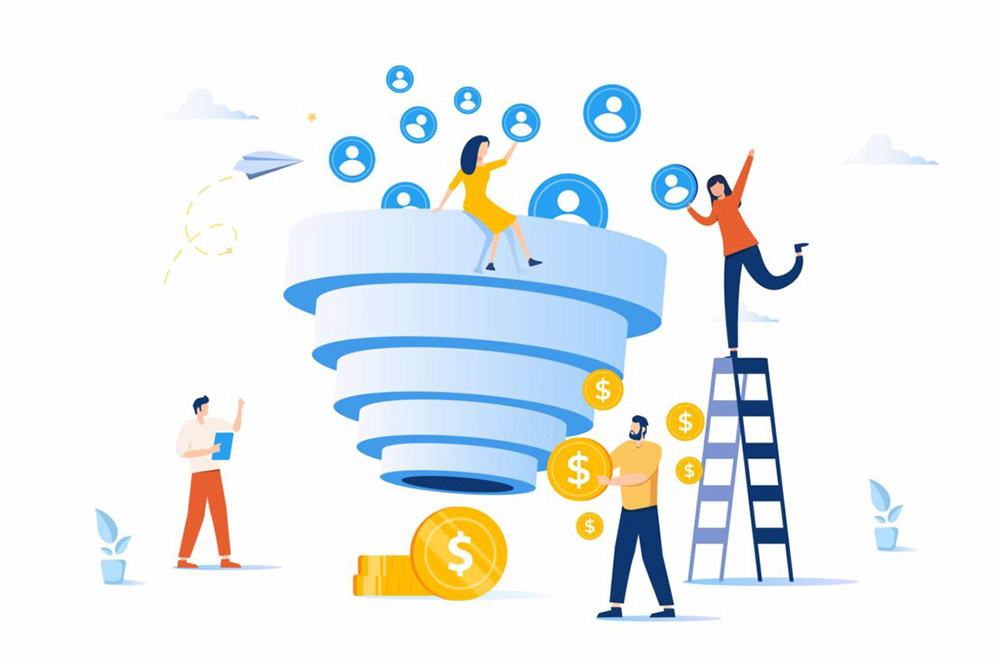Rashi recently ordered a package from an Indian online site, Myntra (www.myntra.com), a few dresses, and a pair of jeans. While she was at work, she got a notification that her package had arrived at her apartment. Needless to say, she was excited to reach home and open it up. She arrived home later that day to find no box of happiness waiting for her at her place. Her excitement instantly turned into disappointment, and in her fury, she bounced onto Myntra’s online chat to sort the issue.
She braced herself for a painfully long conversation, however, she was astonished at the outcome of the chat, in a good way. She explained her situation to the online customer representative and the representative apologized on behalf of the courier (who dropped off the package without a signature). It was not the responsibility of Myntra, however, the representative placed a new order with the same items free of cost. It was a wow moment for Rashi and ever since she had been telling this story to her friends and family.
Seth Godin says, “It’s easier to love a brand when the brand loves you back.” Rashi felt heard and loved by Myntra that day.
“Businesses must understand that they are no longer in a race against the company that sells a comparable product. Instead, they are in direct competition with every other experience a customer has,” said Author and customer experience expert, Dan Gingiss. It gives forward-thinking businesses the chance to build memorable customer experiences that people want to share with others. Additionally, it implies that CX experts should keep an eye on experiences across a wide range of businesses and industries for motivation.
According to a study, 80% of customers feel a company’s experiences are just as essential to them as its goods and services. In other words, your chances of achieving business success directly depend on how well your customers are treated. In addition, once a brand raises the bar in its market, it also raises the bar for all other markets.
According to Neeracha Taychakhoonavudh, EVP of Industries at Salesforce, “Customers now have so much power.” Everyone has a say in the consumer realm of social networks. The benefits of utilizing your most devoted supporters are incredible, however, customers can be very opinionated when they are disappointed. No matter what business you’re in, knowing your customers and understanding their demands is increasingly vital to success.
“Brands should be loyal to the customers, not the other way around,” says Mastercard’s CMO Raja Rajamannar. In other words, marketers should shift their attention away from material prizes and toward developing meaningful experiences and meeting specific customer needs.
What Is Customer Engagement?

The concept of customer engagement came into the light in the digital era. With the development of two-way communication between customers and brands via internet platforms, engagement increased in frequency and visibility. Of course, engagement doesn’t just happen online; it also occurs in person and through more conventional modes of communication.
But what do businesses and thought leaders mean exactly when they refer to customer engagement? Well, that answer varies with different dimensions of customer engagement.
“Customer engagement is the depth of a customer’s relationship with a brand. Every interaction has the potential to either strengthen or weaken it. The more closely a company can connect with customers’ tastes, the deeper customer engagement grows and becomes more mutually advantageous, from purchasing to writing a review to signing up for a loyalty program.
Writing in the Journal of Strategic Marketing, academic Linda Hollebeek explains it in terms of individual investments, ” The extent of a customer’s cognitive, emotional, and behavioral investment in certain brand interactions is known as customer engagement. Additionally, there was an identification of three major customer engagement themes: “immersion,” “passion,” and “activation.”
Customer engagement to Amazon Web Services is loyalty and a business-led activity, “Customer engagement refers to the strategies used by businesses to entice people to return to their websites and mobile applications. In today’s digital economy, where an ever-increasing number of businesses are vying for a limited amount of client attention, maximizing customer engagement is essential.
The majority of businesses will also strive to understand how customer engagement connects to the success of the company in terms of sales, loyalty, and whether the consumer is a detractor or promoter of the brand when they analyze the topic.
What Is The Customer Lifecycle?

The customer lifecycle, as it applies to customer engagement, covers the numerous phases a customer experiences before, during, and following a transaction. Simply described, it’s the route a consumer takes from Point A to Point B before they make the ultimate purchase. The stages a customer goes through during the duration of an ongoing connection with a brand vary depending on the specific circumstances. These are the five fundamental stages of a customer lifecycle:
1. Reach
You need to place your marketing materials and information where consumers can find them. Reach is the initial stage of the life cycle since it immediately raises awareness.
2. Obtain
Acquisition in e-commerce is crucial. If you are unable to provide pertinent material or messaging, reaching out to potential customers won’t mean much. The acquisition will be aided by knowledge of your brand, the things you sell, and the consumer demographic. Personalized communication sent to them directly increases the likelihood of a subsequent conversion.
3. Develop
After the customer makes their initial purchase, your company needs to stay in touch with them. Here, you may start building a relationship with the customer and making sure they are happy with their initial purchase. Using back-end analytics, you can also guess what else they might like based on what they initially purchased. Asking for feedback also promotes relationship building because customers appreciate having their opinions respected.
4. Retention
The likelihood that a client will return and make another purchase is higher if you can consistently deliver them relevant and helpful messages. The first step in customer retention is meeting their requirements, showing them care, and developing a rapport with them. You can give customers the impression that they were involved in the process if you can use their comments to better a good or service. Finding useful insights that can result in a stronger customer relationship requires performing a customer feedback study. Having this kind of trust is beneficial for keeping customers.
5. Advocacy
Once the lifecycle’s retention stage is attained, you want these customers to support your company by becoming brand advocates. They probably won’t hesitate to tell their friends and family about your goods and services if they are satisfied. Once a consumer is devoted to a business, spreading knowledge throughout social circles is simple, and if they consistently pass along favorable testimonials, their wider network is more likely to convert as well.
The customer lifecycle can enable your company to make the most of every consumer that purchases through your website. As a result of a client becoming a brand evangelist, there is more opportunity for upselling. Another wonderful approach to moving customers through the lifecycle is to introduce them to new product features, new releases, or special deals. You can rapidly convert one-time purchases into devoted customers if your messaging is consistent, pertinent, and in line with their needs.
How To Build An Effective Customer Engagement Strategy?

According to Dan Gingiss, “Measuring customer lifetime value is a solid start because it will probably persuade companies to invest more in current customers. “As opposed to continuing the endless cycle of spending on acquisition without consideration for the “leaky bucket” on the other end,” the author adds. Delivering experiences that are personalized and continually connected in real-time is key to customer engagement success. These are all essential components of successful customer engagement methods.
Every department should have the customer details
The average enterprise uses 900 different applications, only 29% of which are connected, and sixty-four percent of customers use numerous devices to initiate and complete single transactions. Over three-quarters of customers expect your business to speak with a unified voice, whether speaking to sales or customer service, in-store or online.
Therefore, every department needs to have access to past customer data. Anyone working for your organization should be able to easily access customer information and interact with them as needed without asking them the same questions over and over again.
The right engagement across all channels
For customers, customized engagement is of utmost importance. Customers expect businesses to comprehend their specific demands and expectations, according to 66% of consumers. Additionally, 52% of customers anticipate offers to always be tailored, up from 49% in 2019.
What does this level of client involvement entail? It can imply presenting a tailored marketing offer or proactively contacting them to address a potential problem. Customers also anticipate personalized messages across all channels. 76% of consumers favor various channels depending on the message’s context.
Personalized customer experience
Personalization is a necessity since it is acknowledged by marketers to have a significant impact on the customer journey. As they move from brand awareness to purchase, customers demand a personalized experience.
They also want customer care to engage them in a concierge-like manner. The standard for what makes an experience individualized is growing. They want you to be the kind neighbor or coworker who brings you a cup of your favorite coffee during a stressful week.
Instant and reliable customer response
83 percent of customers now anticipate instant response when they contact a business. Customers also anticipate instant gratification while making purchases. According to a study by Salesforce, 70% of consumers choose ease over branding. In terms of customer service, 65% of clients prefer to handle straightforward issues on their own through self-service.
Become one of the businesses that value customer information and use it to enhance customers’ interactions with your brand, earning their trust and loyalty in the process. Businesses may use data to discover novel and appealing methods to engage customers and keep them coming back with personalized, consistently connected, real-time communication throughout every customer touchpoint.
https://clevertap.com/blog/customer-engagement-examples/
https://hbr.org/sponsored/2021/07/making-customer-experience-the-heart-of-the-enterprise
https://www.businessnewsdaily.com/4890-customer-engagement-tips.html
https://www.salesforce.com/resources/articles/customer-engagement/
https://www.bigcommerce.com/ecommerce-answers/what-customer-lifecycle/
https://userguiding.com/wp-content/uploads/2021/03/customer-engagement-strategies-1.jpg
https://twilio-cms-prod.s3.amazonaws.com/original_images/Top_Upcoming_Trends_1600x900.png
https://emarsys.com/app/uploads/fly-images/89094/GettyImages-1249553384-scaled-1110×9999.jpg
https://www.ascentrik.com/wp-content/uploads/2021/03/feb-08.jpg
Written By: Jimmy Jain
Edited By: Afreen Fatima
Society of Design Thinking Professionals









